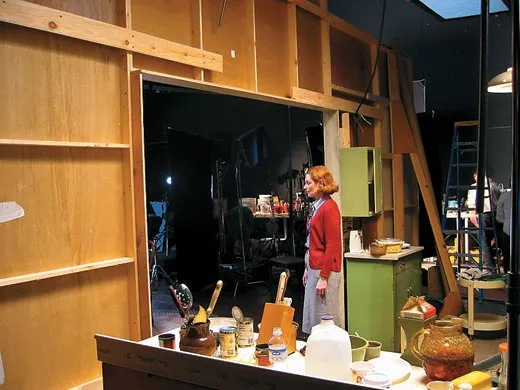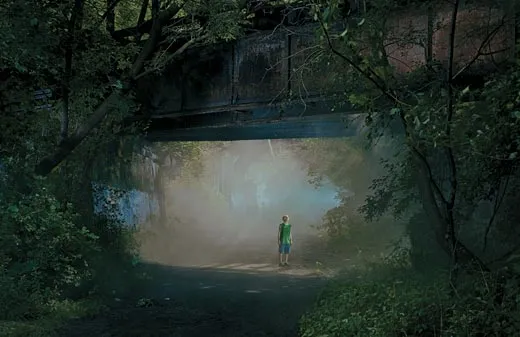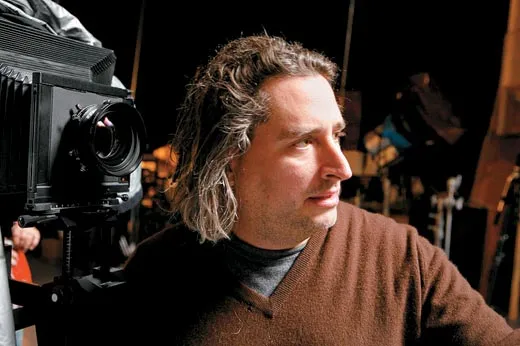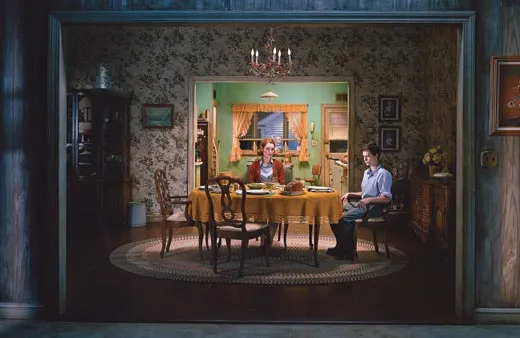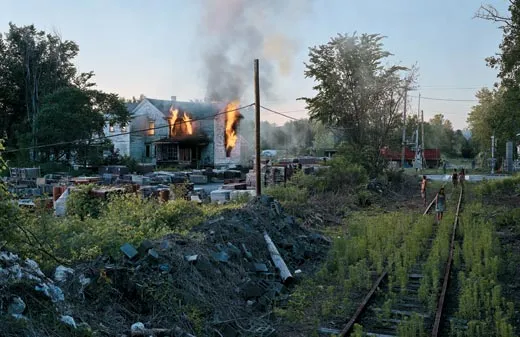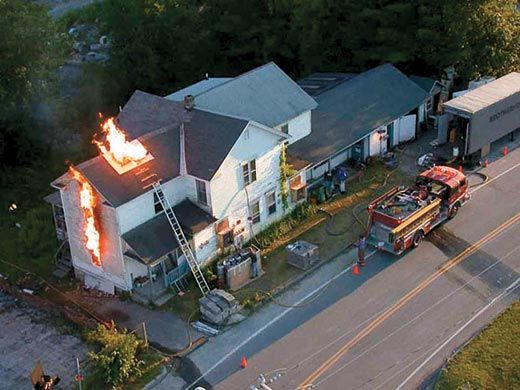Gregory Crewdson’s Epic Effects
The photographer uses movie production techniques to create “in-between moments.” But you’ll have to supply the story line
The photograph seems utterly serendipitous: a boy stands under a bridge, framed by lush trees, and directs his (and the viewer's) gaze heavenward through backlit fog toward some unseen attraction.
But nothing has been left to chance. The photographer, Gregory Crewdson, scouted the spot under a Massachusetts railroad bridge for a month, and a crew of about 40 people spent days setting up the shot. The illumination comes from lights suspended from cranes, and the fog rises from hidden machines. Crewdson instructed the boy, who had been hanging around the bridge, to imagine "a dream world where everything is perfect."
Such preparation for a single photographic image may seem a bit much, but this was a relatively simple Crewdson shoot. For some of the photographs collected in his new book, Beneath the Roses, he shut down public streets, used rainmaking machines to produce downpours—even simulated a raging house fire. He uses such Hollywood-scale production techniques to create what he calls "in-between moments"—interludes just before or after unspecified but obviously momentous events. His pictures set the stage for a story, but the viewer has to flesh it out.
"When I'm making my pictures, I never really think about what happens before or what happens after," says Crewdson, 45. Growing up in Brooklyn in the 1960s, he was intrigued by his father's work as a psychoanalyst. "The fact that his office was in our house always suggested some sense of the furtive or the secret," he says. Dyslexia eventually drew Crewdson to photography. "I have a very difficult time thinking linearly," he says. "I tend to think more in terms of images."
While at the Yale University School of Art, where he earned an MFA in 1988, Crewdson spent lots of time taking pictures in western Massachusetts, where his family had a cabin. Since then, he has used that landscape as a giant photo studio, seeking locations that he says evoke the "familiar and unfamiliar."
The resulting pictures, typically stitched together from negatives scanned into a computer, "look like paintings, but they give you an emotional feeling stronger than a lot of movies you'd walk away from," says Rick Sands, Crewdson's director of photography, who has also worked on films. "If you read a screenplay, it is telling you where to go....You take yourself places in one of his pictures."
The photographs in the book were taken over seven years at a cost of "less than you think it would," says Crewdson. He and his wife, Ivy, an art consultant, live in Greenwich Village with their children, Lily, 3, and Walker, 1. He often gets his ideas while swimming (he tries to get in some laps every day), but it takes months to produce a finished image. For outdoor scenes, he'll drive around to find sites; interiors are built on a soundstage at the Massachusetts Museum of Contemporary Art in North Adams. Crew members say he knows what he wants but is open to possibilities. "He'll tell me he wants women that look haunted or somebody who looks like they've lived a hard life," says casting director Juliane Hiam.
Crewdson teaches photography at Yale, but making pictures is his "main job"; a Crewdson print can sell for up to $150,000. He insists it's not about money. "It's just about trying to find something elusive and beautiful and mysterious in the world," he says.
Kenneth R. Fletcher is an intern at Smithsonian magazine.
